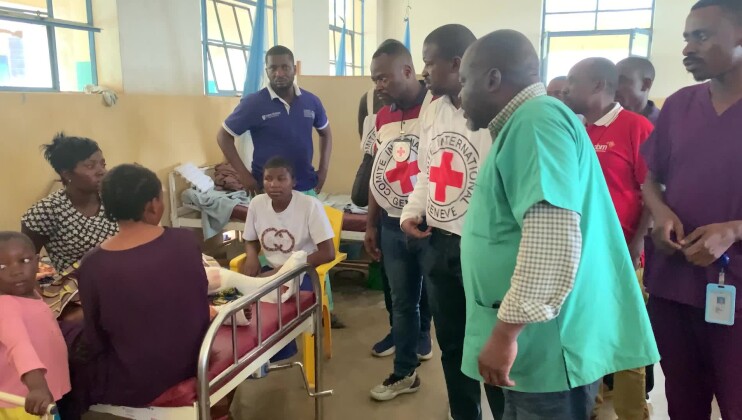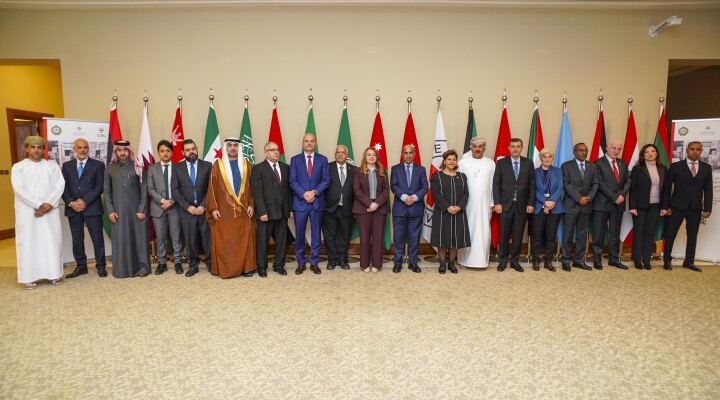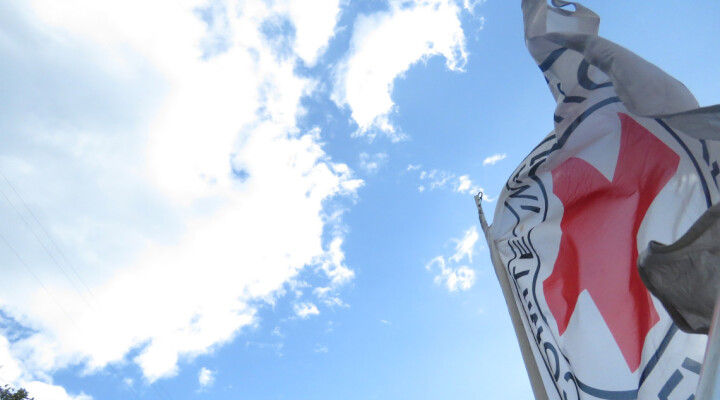Video News Footage: New drone uses artificial intelligence to locate mines and explosive remnants of war
A new drone technology using artificial intelligence has been developed to detect landmines and explosive remnants of war, a technological development that will help speed up mine detection and clearance in the coming years.
Typically, in mine clearance operations the average figure per de-miner is 50 square meters per day. Conservative estimates suggest this new tool will be able to survey and process 100,000 square meters a day for more efficient demining later.
This development comes at a time when more people today face danger from mines and unexploded ordnance than even two years ago due to the fighting in Ukraine and Ethiopia that has contaminated wide areas of farmland and neighbourhoods.
The International Committee of the Red Cross (ICRC) demonstrated this new technology in Avally, Switzerland on 7 June 2023. The Head of the weapon contamination unit at the ICRC, Erik Tollefson, also spoke about the mine risk created by the flooding triggered by the destruction of the Nova Kakhovka dam.
SHOTLIST
Length: 08 :34
Location: Centre d’instruction des troupes de sauvetage, Avully, Switzerland
Date Of Filming: 07.06.23
Copyright: ICRC access all
Camera: Christopher Nicholas
ICRC REF: 20230608-ICRC-Tollefsen-WEC-AVN
SOUNDBITES FROM Erik Tollefsen, Head of ICRC’s Weapon Contamination Unit:
00:00 I'll start by trying to answer a few of these very pertinent questions about the incident last night on the Kakhovka dam in Ukraine across the Dnipro River. It's a major incident and it has so many facets of concern.
And of course, when you have all these tons and tons of water, and as you know, water is non-compressible, right? It will pollute, it will push, it will excavate, it will bring with itself destruction. So one thing is what you have seen transmitted from the cameras in place of people sitting on the rooftops and waiting for assistance.
00:55 But it's all the other things that we have yet to see. For instance, that water sources would be contaminated, all the other toxic industrial chemicals that have been brought downstream that will impact these communities, that will have to be assessed and have to be addressed. And also, you mentioned this issue about weapon contamination.
01:25 So the ICRC has been supporting the government of Ukraine and particularly the national society, the Ukrainian Red Crescent Society, as well as the emergency services with marking materials, with training, with mapping the current level of contamination. Now, all of that has been washed away, right?
01:50 We've been donating hundreds of thousands of these mined signs. You've seen this triangle shaped once that is warning the civilians that this is danger ahead of you. Don't go in there because it will harm you. And now people don't know. So that's one thing that the marking has gone. The other part, which is equally bad, is that, remember, water is non compressible. It will push these mines away. So in the past, we knew where the hazards were, now we don't know. All we know is that they are somewhere downstream. And this is a major concern because it really affects not just the population, but also all of those that are coming in to help, right?
02:33 These are big TM 57 antivehicle mines, which has seven kilos of high explosives inside them. So you can imagine the damage it will do to an ambulance driving over them. These mines are victim-activated. So it's not just a tank, but also lorry truck, an ambulance. We'll be able to detonate these things.
02:58 But we have a very, very good team in Ukraine, and we have some of the best experts that you can find in the world supporting the government, supporting the communities, supporting national society with action, including advice on how to map these things and how to avoid having these incidents.
03:21 But we also have the team that I represent globally that is working with the expertise in terms of stockpile destruction, in terms of marking fencing clearance, and also the risk awareness activities we do on mine action. So today we have brought in our experts here to talk about what the problem is and how we contribute to doing it. But of course, we can only give you a small tasting menu of what we do in the field. We are working in many countries across the world, and of course, the approach needs to be different.
04:09-09:17 GVs of DRONE DEMONSTATION
Martin Jebens, Weapon Contamination Specialist, consultant to the ICRC, demonstrating how drone technology and AI can be used to detect mines and explosive remnants of war.
SoundbiteS Martin Jebens, Weapon Contamination Specialist, consultant to the ICRC
04:09 My name is Martin Jebens. I am a weapon contamination specialist and I work for Erik's unit at ICRC. We are going to present a little bit here on our project here. Yeah, without replicating everything Erik said, it's a quite successful collaboration with academia. You don't necessarily often see that in humanitarian action because there are different expectations between academia and humanitarian action. But in this case we had the time to actually manage this project properly even though we did most of it during COVID.
04:50 Basically we wanted to see how off the shelf products, as Erik mentioned, can be used for detecting landmines and explosive remnants of war. So one of the key objectives of this was to make it sustainable. So this is why you see these types of drones here, which is reasonably cheap. The one I'm going to show you in a minute is the Splash Drone 4 which is approximately 2,000 Swiss Francs. On that is a normal true colour camera like you all have here. And then we have a thermal sensor on the side here, which is the small box here. The price of that is approximately 3,000 Swiss francs. So you get this set up for somewhere around 4,000 Swiss francs, which is cheap compared to some of the bigger solutions that you find on the market now.
05:50 And one important part of that is of course that we don't want to relocate resources from taking the mines out of the ground. We want to make it in a way so that people can handle this in the field and actually can afford to use these methods.
06:08 Then this drone actually is also waterproof. So there's things about that you have to consider when you take a drone into the field. You don't necessarily get a lot of dust into it. It's very simple setup. So it can actually also cope with the different climate situations we see in the areas in which we operate.
06:29 I will just fly the drone a bit. I will take it over these elements here. Objects here in a little bit of different heights and then return. And then just show a few pictures on my laptop. And then basically that will be it.
07:12 Then the AI itself will take half a day maybe to run maybe even faster.
07:22 When you use the RGB cameras you will probably fly with around 5 meters/second. With the thermal camera you will take 2.
07:49 So you can use it for detecting surface objects. It's quite accurate at detecting surface objects. I mean, there we have these 95% of a larger mortar. For subsurface objects, it’s a little bit more difficult. But again, you can still see when you zoom in, and you can start seeing some of the buried objects in an area like this.
Ends 08:34
For further information, please contact:
Jason Straziuso, Spokesperson Geneva, International Committee of the Red Cross
Tel: +41 79 949 3512
Email: jstraziuso@icrc.org



